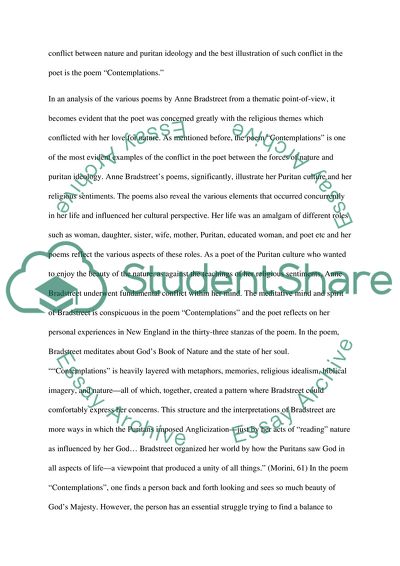Conflict between Nature and Puritan Ideology in Anne Bradstreet's Poems Essay Example | Topics and Well Written Essays - 1500 words. https://studentshare.org/literature/1723273-conflict-between-nature-and-puritan-ideology-in-anne-bradstreets-poems
Conflict Between Nature and Puritan Ideology in Anne Bradstreet'S Poems Essay Example | Topics and Well Written Essays - 1500 Words. https://studentshare.org/literature/1723273-conflict-between-nature-and-puritan-ideology-in-anne-bradstreets-poems.


